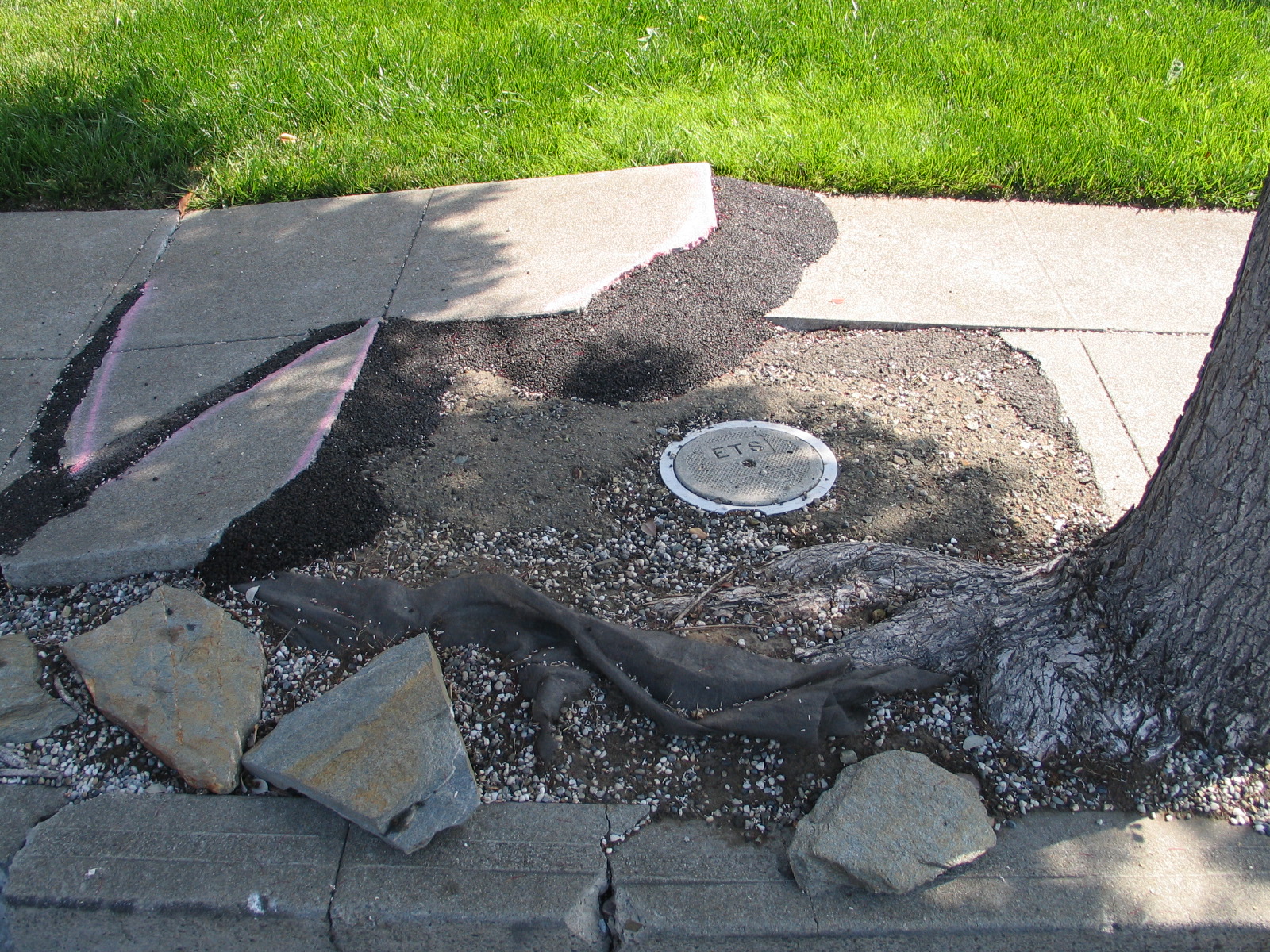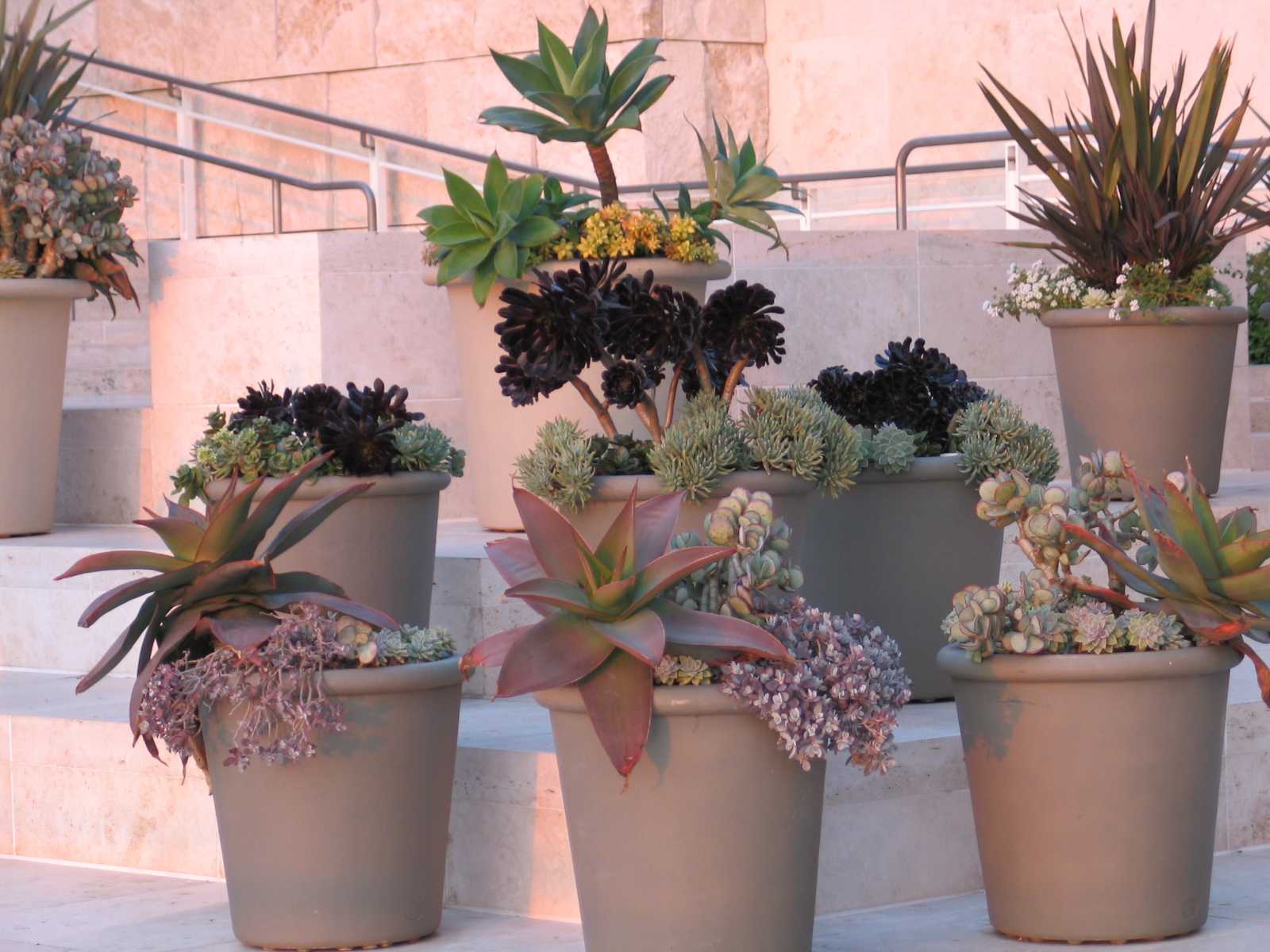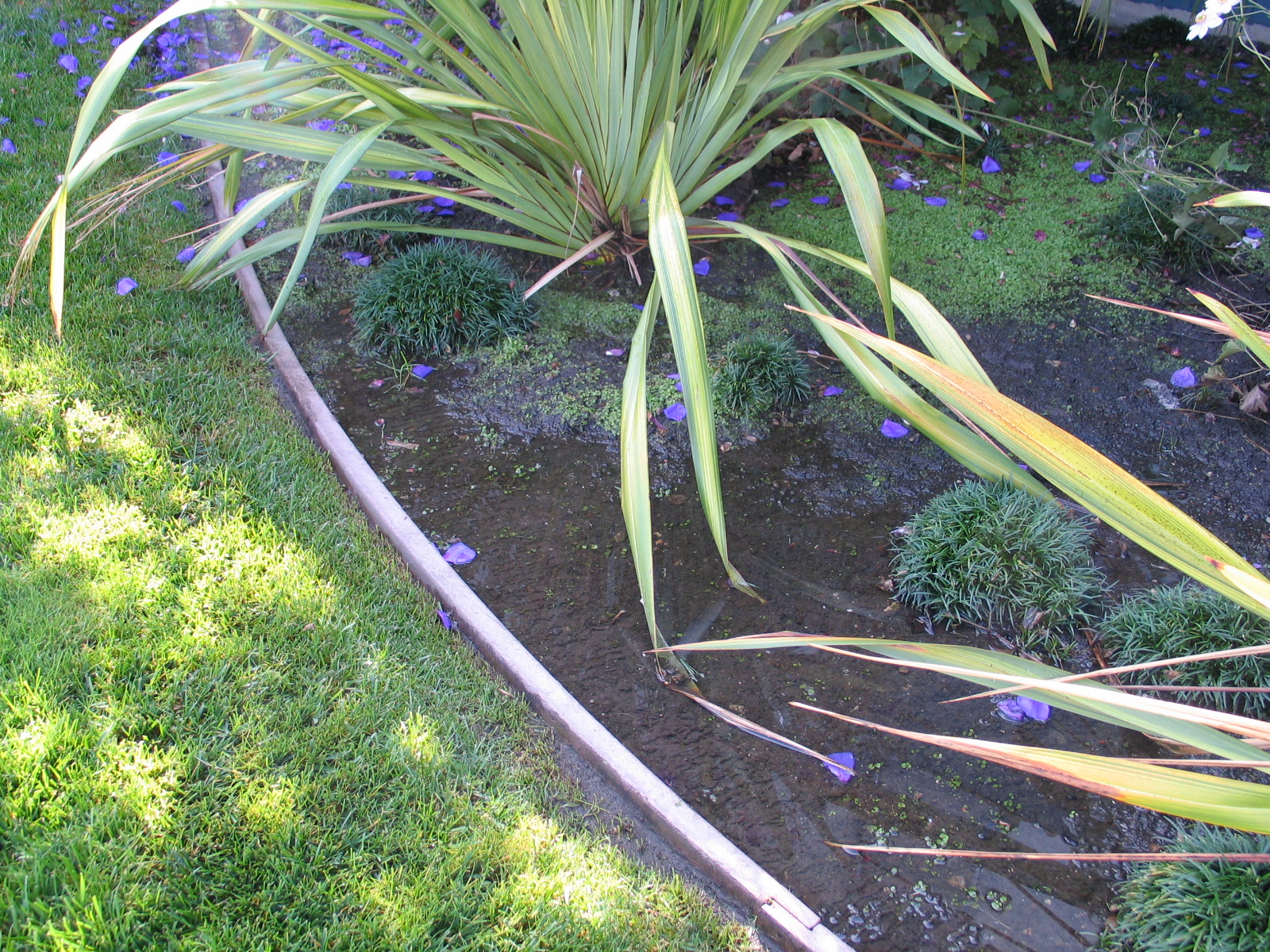I am sorry to say that despite the incredible amount of coverage that water use gets these days, almost none discusses some of the long-term effects of inappropriate watering practices. I am not going to start counting how many gallons you can save by switching to drip irrigation, or the fact that spray irrigation can lose 50% to the wind and evaporation before your plants get any of it....nope, I'm not. I do want to mention a few things that I've learned through being a Landscape Architect and a gardening enthusiast:Roots: I read a letter to the editor in our glorious Alameda Journal (23 october 2009) in which a woman complains about street tree roots buckling her walkway. I have not seen her property, but I would bet a whole lot of donuts that the problem can be traced back to shallow irrigation. Roots know what they're doing, they take up water and nutrients for the plant (tree, shrub, whatever). They will go where the water is, and if the good stuff is to be found in the top layer of the soil, that is where you will find the roots. This goes for a tree, a shrub, all plants including a lawn. So when your sprinkler system is on for 10 minutes and soaks in maybe 3", or you stand outside with a hose for half an hour, you can expect the majority of roots to gravitate to that topmost layer, including those of walkway-bucking trees.Here's the part I wish those water-wise articles would mention: IF you water your plants deeply and less frequently, their root systems learn to dive deep to find it. Even a lawn can have roots that are a couple of feet deep! Water deeply, and the water lasts longer, is available to the roots of your plants, and then when there is a drought, those plants have a better survival rate thanks to their deep, probing root structure!! Containers: I prefer terracotta pots for the numerous ways in which they have been a good home to my plants over time (oh yeah, this is about water, not pots... I'm getting back on track now). Whatever containers you use, when the root ball dries out, it shrinks and pulls away from the sides. The next time water is poured into that container, the water runs around the rootball (not through) and out the bottom, doing the roots of your plants no good. There are goofy weird products on the market that claim to hold moisture in the soil, or add water over time, blah blah. I've tried many and never liked one. In my garden, I have a 1/8" thick wire stake of forgotten origin that I use to poke holes into the rootballs of neglected container plants when I water. The holes allow air to escape, water to penetrate, and roots to get what they need. If I have been particularly rotten to my container plants, I fill a bucket or my wheelbarrow with water and I soak them in it to allow them to really soak it up. A note: I don't think self-watering containers work well. The photo below shows a lovely display from the Los Angeles Getty Museum gardens several years ago - I wonder, though, are they hand-watered? is the water allowed to drain out? Was I just lucky enough to see this display before that water stained the paving? Container plants need water and drainage in order to stay nice for more than a short time.
Containers: I prefer terracotta pots for the numerous ways in which they have been a good home to my plants over time (oh yeah, this is about water, not pots... I'm getting back on track now). Whatever containers you use, when the root ball dries out, it shrinks and pulls away from the sides. The next time water is poured into that container, the water runs around the rootball (not through) and out the bottom, doing the roots of your plants no good. There are goofy weird products on the market that claim to hold moisture in the soil, or add water over time, blah blah. I've tried many and never liked one. In my garden, I have a 1/8" thick wire stake of forgotten origin that I use to poke holes into the rootballs of neglected container plants when I water. The holes allow air to escape, water to penetrate, and roots to get what they need. If I have been particularly rotten to my container plants, I fill a bucket or my wheelbarrow with water and I soak them in it to allow them to really soak it up. A note: I don't think self-watering containers work well. The photo below shows a lovely display from the Los Angeles Getty Museum gardens several years ago - I wonder, though, are they hand-watered? is the water allowed to drain out? Was I just lucky enough to see this display before that water stained the paving? Container plants need water and drainage in order to stay nice for more than a short time. Watering Practices: I love walking around in the evening, winding down after my day. I see a lot of irrigation at night, though, and wish that more people understood the benefits of watering in the early am instead. Plants lose most of their moisture during the heat of the day as a byproduct of photosynthesis (evapotranspiration from photosynthesis is where plant-released oxygen comes from), so watering before plants need it is ideal (but if you have wilting, dry plants at noon, they need it asap!). If you have good drainage, so much the better because the (assuming we're not growing aquatic plants) roots won't be left to wallow in suffocating muck. Leaving plant roots in cool, damp soil as the temperature drops (evening watering) can promote the growth of undesirable mold, fungus, and plant disease. Please also pay attention to the drainage of your soils! The water here is pooling due to being both trapped by the edging and also because the soil in this area is so over watered, it has developed a scummy skin that keeps their irrigation efforts on the surface for hours after each watering.Please know that there are evapotranspiration (ET) irrigation systems that can adjust automatically (with the help of a weather station) to turn the water off when it is raining, adjust for seasons, soils, slopes, and planting types! You do NOT have to rely on remembering to run out in the rain to turn the thing off or waiting for your maintenance service to do it for you.
Watering Practices: I love walking around in the evening, winding down after my day. I see a lot of irrigation at night, though, and wish that more people understood the benefits of watering in the early am instead. Plants lose most of their moisture during the heat of the day as a byproduct of photosynthesis (evapotranspiration from photosynthesis is where plant-released oxygen comes from), so watering before plants need it is ideal (but if you have wilting, dry plants at noon, they need it asap!). If you have good drainage, so much the better because the (assuming we're not growing aquatic plants) roots won't be left to wallow in suffocating muck. Leaving plant roots in cool, damp soil as the temperature drops (evening watering) can promote the growth of undesirable mold, fungus, and plant disease. Please also pay attention to the drainage of your soils! The water here is pooling due to being both trapped by the edging and also because the soil in this area is so over watered, it has developed a scummy skin that keeps their irrigation efforts on the surface for hours after each watering.Please know that there are evapotranspiration (ET) irrigation systems that can adjust automatically (with the help of a weather station) to turn the water off when it is raining, adjust for seasons, soils, slopes, and planting types! You do NOT have to rely on remembering to run out in the rain to turn the thing off or waiting for your maintenance service to do it for you. Runoff: Okay, so we've talked about water and your vegetation, and we know that we don't want to water the sidewalk, but what about all that flooding that we get in a good storm? Permeable paving products hope to help solve the problem, see this report adopted by the California Coastal Commission in March, 2007. I would point out, however, that permeable paving solutions are dependent on proper maintenance, and that even compacted soil can resist water penetration as well as any hard paving material. So, not to get into a discussion of style or design, I would encourage everyone to consider where a permeable solution can be used. It is far nicer to have all that lovely rainwater seep into the soil than to run off our urban and suburban surfaces, filling up the storm drains instead. I was given this book on Rain Gardens as a gift about a year ago, it is worth reading. I bring up runoff, because I've noticed several water-saving lists recommending adding non-planted areas to cut down on the amount of water needed to irrigate. I think that suggesting this is misleading and not necessarily an environmentally friendly practice.
Runoff: Okay, so we've talked about water and your vegetation, and we know that we don't want to water the sidewalk, but what about all that flooding that we get in a good storm? Permeable paving products hope to help solve the problem, see this report adopted by the California Coastal Commission in March, 2007. I would point out, however, that permeable paving solutions are dependent on proper maintenance, and that even compacted soil can resist water penetration as well as any hard paving material. So, not to get into a discussion of style or design, I would encourage everyone to consider where a permeable solution can be used. It is far nicer to have all that lovely rainwater seep into the soil than to run off our urban and suburban surfaces, filling up the storm drains instead. I was given this book on Rain Gardens as a gift about a year ago, it is worth reading. I bring up runoff, because I've noticed several water-saving lists recommending adding non-planted areas to cut down on the amount of water needed to irrigate. I think that suggesting this is misleading and not necessarily an environmentally friendly practice.